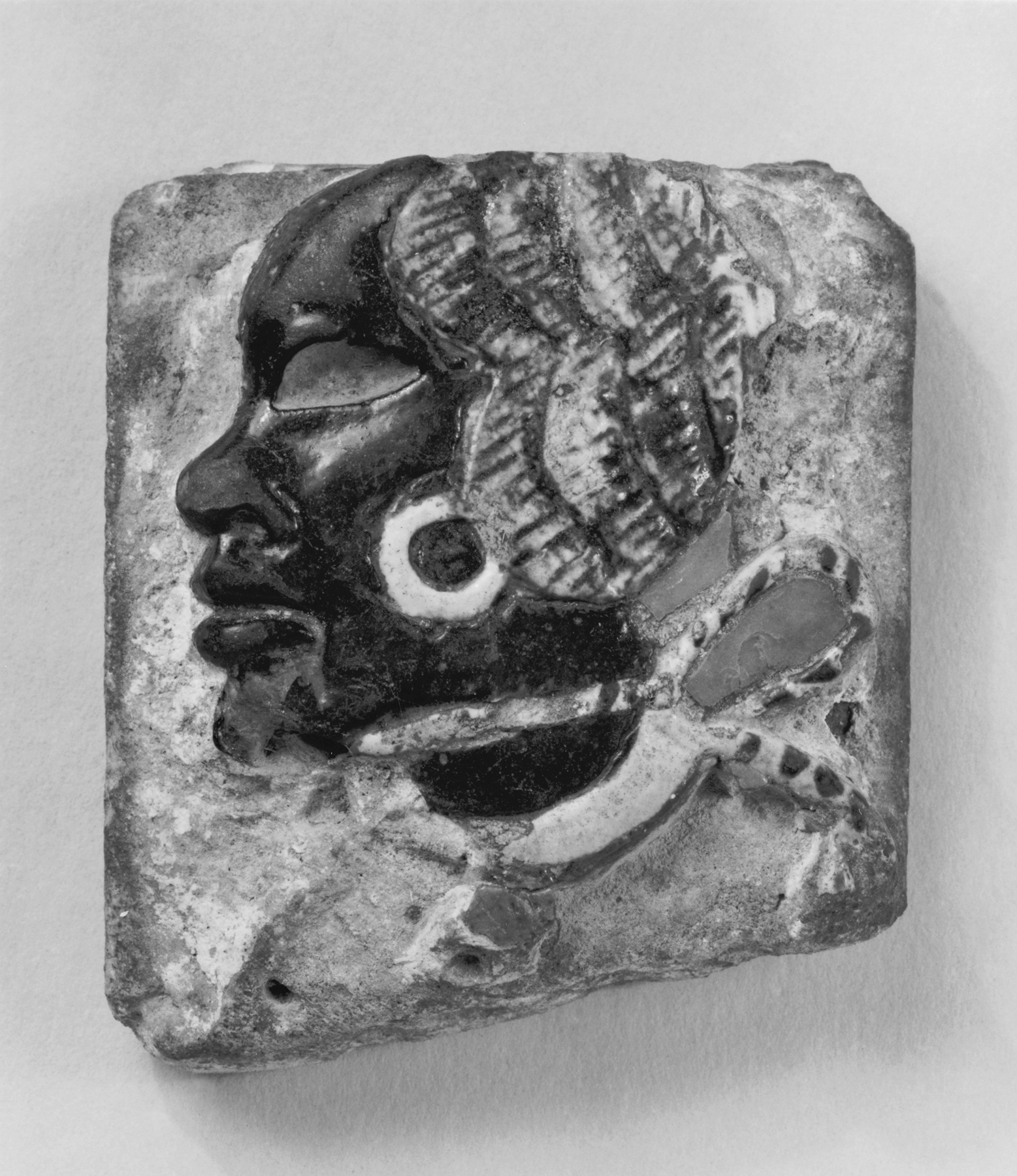Tile: Captive Nubian Chieftain
(Ancient Egypt and Nubia )
To reinforce their power visually, Egyptian royal monuments often displayed depictions of groups of foreigners bound as prisoners or in defensive positions while Egyptian sovereigns attacked. Representatives of various Nubian groups were frequently included, along with Babylonians, Libyans, Syrians, Hittites, Canaanites, Philistines, Amorites, and even Greeks. While some nations were conquered and captured, others were vassal states that offered tribute or were bound to Egypt by diplomatic treaties. To depict the foreign groups, Egyptian artists standardized their clothing and hairstyles into set “types” and emphasized any perceived physical differences from Egyptians. This man has the large earring and tightly curled hairstyle typical of Egyptian depictions of Nubians. When complete, the tile showed the chieftain as a bound prisoner. Such prisoner tiles could have decorated the bases of walls of royal buildings, so the enemies of the pharaoh would be quite literally at his feet.
Provenance
Provenance (from the French provenir, 'to come from/forth') is the chronology of the ownership, custody, or location of a historical object.
Dikran Kelekian, Paris and New York, [date and mode of acquisition unknown]; Henry Walters, Baltimore, 1929, by purchase; Walters Art Museum, 1931, by bequest.
Conservation
| Date | Description | Narrative |
|---|---|---|
| 8/21/1998 | Examination | survey |
Geographies
Egypt, Luxor (Medinet Habu) (Place of Origin)
Measurements
3 1/16 x 2 3/4 x 15/16 in. (7.8 x 7 x 2.4 cm)
Credit Line
Acquired by Henry Walters, 1929
Location in Museum
Accession Number
In libraries, galleries, museums, and archives, an accession number is a unique identifier assigned to each object in the collection.
In libraries, galleries, museums, and archives, an accession number is a unique identifier assigned to each object in the collection.
48.409


